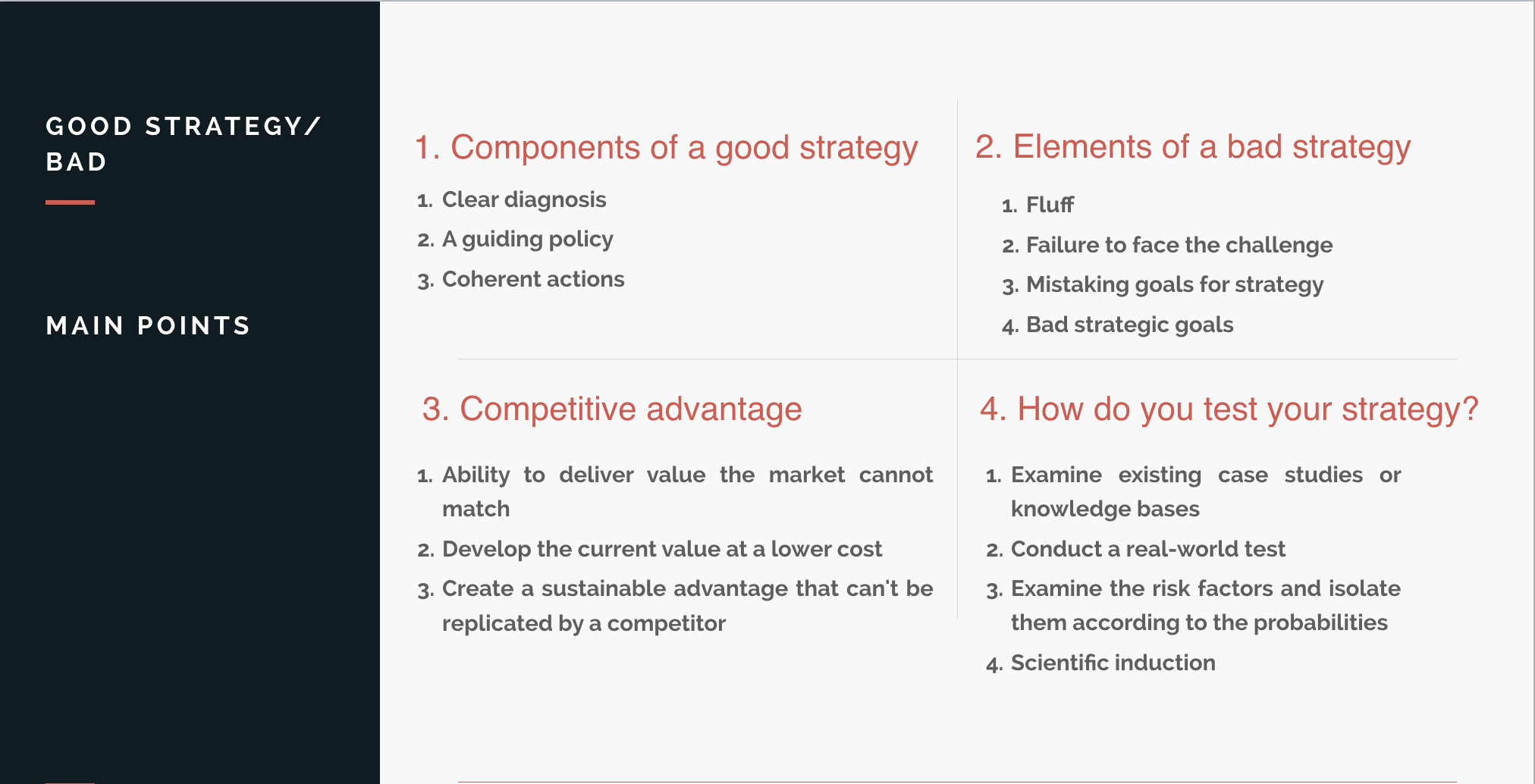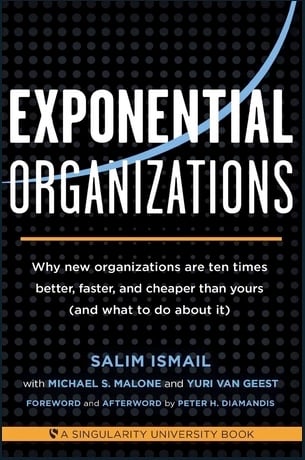Before attempting any significant endeavour, you should always have a strategy. Having developed one you should always ensure that is achievable. There has been a myriad of companies that have implemented strategies that have turned out to be less than successful. The fact is that many companies are unaware that they are implementing bad strategies.
Therefore, you should know how to differentiate a good strategy from a bad one. Let’s examine Richard Rumelt’s illuminating book, Good Strategy/Bad Strategy, and understand the difference between the two.
Insight: Organisations that can differentiate a good strategy from a bad one will be able to come up with a great strategy of their own.
Data: 49% of leaders spend only one day a month reviewing their strategic implementation.(executestrategy.net)
Only 68% of leaders believe their organisation is good at developing strategy. (executestrategy.net)
33% of leaders rate their organisation as poor or very poor at implementing strategy. (executestrategy.net)
What’s the step change: To understand the key differences between a good strategy and bad strategy, and transfer this knowledge into your own organisational strategy, download Knowledge Nuggets: Good Strategy/Bad Strategy to learn more.
Before differentiating good strategy from bad strategy, let’s identify what a strategy really is.
- The word strategy is derived from the Greek word Stratēgia which means “ Art of the troop leader or generalship.” It means a high- level plan to achieve one or more goals under conditions of uncertainty.
- In the 21st Century, strategy has taken on a broader meaning. Aside from being used in a military context, strategy is also used in business planning, sports, and even personal strategies.
- Strategy requires a plan of action designed to achieve an overarching aim. It is the means by which individuals attempt to bring order to a disordered world.
In the words of Napoleon Bonaparte:
“The battlefield is a scene of constant chaos, the winner will be the one who controls that chaos—both his own and the enemy's.”

1. Components of a good strategy
-
It should have a clear diagnosis
When designing a strategy, you should first acknowledge the challenges you face. In doing this you won’t delude yourself with a false sense of security. Instead, you can focus your efforts on the problem at hand. With a good diagnosis you can simplify the problem no matter how complex it may be.
-
Guiding policy
One of the key requirements of a good strategy is that there is a guiding policy. This is an overall guideline on how to deal with the problem at hand. Think of the guiding policy as the handrails to a man-made bridge. They are there so you won’t go over the edge. It acts as a guide and a safety precaution. A guiding policy is a way for you to understand the overall situation and rule out a vast array of possible actions at the same time.
-
A set of coherent actions
The coherent actions are specifically designed to act out the guiding policy. They are actions that go hand in hand with the guiding policy. They are the consistent and coordinated activities that your organisation should undertake in delivering the strategy.
2. Elements of a bad strategy
-
Fluff
When it comes to creating effective strategies, they should not be overly complicated. Good strategies are simple and straightforward. Bad strategies usually have a lot of fluff and lack action. Think of fluff as mere gibberish trying to pass itself off as sound strategic concepts.
-
Failure to face the challenge
Another element of bad strategy is the fact that the main issue or challenge is not properly defined. If you can’t define a problem, how are you going to come up with a strategy to overcome it? If you want a comprehensive strategy, you should ensure your problem is correctly defined.
-
Mistaking goals for strategy
If you want to develop a good strategy, you should make sure that you don’t mistake goals for strategy. Goals are merely statements of desire and are empty if they are not backed up with sound action.
-
Bad strategic goals
Before you set out and create a strategy, you should develop a comprehensive strategic goal. If you fail to do this, then your efforts could be wasted. Therefore before you settle on any strategic goal, you should make sure it is well-defined.

3. Competitive advantage
When developing a strategy, the key goal is to develop a competitive advantage. Here are the key points in achieving a competitive advantage.
-
Ability to deliver value that the market cannot match
Competitive advantage is about delivering value that the market cannot match. There will always be competition, but if your organisation is able to deliver value that cannot be matched, then you will have a competitive advantage.
You can increase value by doing the following:
- Create additional advantages
- Create greater demand for products and services
- Strengthen the isolating mechanisms to block replication and imitation by competitors
-
Develop the current value at a lower cost
Aside from being able to deliver value at a lower cost, you should always make sure that you don’t break the bank. What’s the point of creating value if you are haemorrhaging money and not generating a profit?
-
Create a sustainable advantage that can't be replicated by a competitor
Another important aspect of having a competitive advantage is to make sure that it is sustainable, and cannot be matched by a competitor. It would be a futile gesture to come up with a great product with great value and low production cost, if it can be easily replicated. Take the time to strengthen your isolating mechanisms, to ensure your competitors cannot easily copy your product.
4. How do you test your strategy?
Developing a strategy is a comprehensive process. Here are some ways you can test your strategy and find out whether it is a good or bad one.
-
Examine existing case studies and knowledge bases
You can test your strategy by comparing it to existing case studies and knowledge bases. Make comparisons with the research and statistics, take note of their results, and check whether their strategies were ultimately successful.
-
Conduct real-world tests
You can test your strategy by conducting real-world tests. Take the time to test out your strategies in isolated tests. These can come in the form of soft-openings, surveys, beta tests. By doing so, you will be able to identify your key advantages and what aspects of your strategy you can improve on.
-
Examine the risk factors and isolate them according to their probabilities
Identify the risks associated with your strategy. Look for risk factors and isolate them according to their probabilities. By taking these steps you will be aware of the potential problems and take the necessary precautions to avoid them.
-
Scientific induction
It always pays to use scientific induction in your tests. When you conduct scientific induction, take the time to form a hypothesis, gather data, and then conduct your tests. Look for any anomalies and list down the results. By taking a scientific approach to your tests, you will be able to have a better understanding of strategy and making improvements.
Download our Knowledge Nugget on Good Strategy/Bad Strategy.















